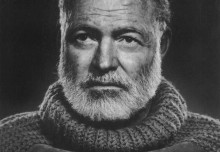
Recently my colleague Jennifer and I held a Myers-Briggs Type Indicator (MBTI) debrief at a retreat for a startup. When the results revealed that all the members of the leadership team identified as “Thinking” types versus “Feeling” types, an interesting question arose from within the group: What is the appropriate role for “Feeling”-based decision-making, if any, in a data-driven, analytical business environment?
From our perspective, the question reflected a common misconception about the Thinking/Feeling dichotomy, and further about the relative lack of value many leaders place on so-called “soft-skills”. However, it presented us with an opportunity to address a possible blind spot within the team and to promote greater awareness of the critical role that preferences have on corporate strategy and culture. Armed with this information, they could then be more deliberate about their approach to both information gathering and decision-making at the executive level.
Thinking and Feeling are one of the four dichotomies in the Myers-Briggs Type Indicator, an assessment that identifies innate preferences in how we take in information and make decisions. In making decisions, Thinking types (T) give preference to logic, analysis, and cause and effect reasoning, while Feeling types (F) give preference to people, values, and group harmony as an outcome. All of us both think and have feelings, obviously, so the MBTI terminology shouldn’t be confused with the colloquial definitions of these words. It’s also worth noting that whether you are a “T” or an “F”, you will make use of data and consider people impacts in your decision-making process at least some of the time. The primary distinction between Ts and Fs, according to the MBTI, is that Ts have a strong preference for objective decision-making from a psychological distance based on an established set of standards or principles, while Fs prefer to take a more flexible approach that begins with assessing a situation from individual points of view to consider the likely impacts the decision will have on others. For this leadership team, their strong collective preference for Thinking seemed to manifest in frequent rigorous testing of knowledge and a paralyzing quest for the “right” answer, and a discomfort with exploring individual people’s ideas and gathering diverse perspectives. Several team members expressed frustration that outcomes sometimes appeared to conflict with the values or original intent of the leaders’ decisions.
How then might a “high T” leadership team use this newfound self-awareness to their best advantage? One response would be to deliberately ask questions that might otherwise be overlooked or not prioritized. While they would likely review data, weigh pros and cons, explore the consequences of alternatives and ask “what’s logical?”, a self-aware group of “T”-preference leaders would also mindfully consider questions outside their natural way of approaching a decision. These might include: Have we heard from everyone? What impact do we think it will have on the people involved and our broader culture? Does the choice and final decision match the values we believe in? Asking and answering these questions will ensure that a more complete view of the decision is considered.
Another self-aware step for this group would be to strive mindfully for greater balance by seeking to diversify the composition of their management team so that a wider variety of preferences and perspectives are represented. The desire to gain self-understanding and to use that knowledge to improve organizational culture and to strive for optimal balance starts at the top. By increasing their own self-awareness, through assessments such as MBTI or other self-discovery activities, leaders can see, and take steps to address, potential blind spots in their organizational culture.









